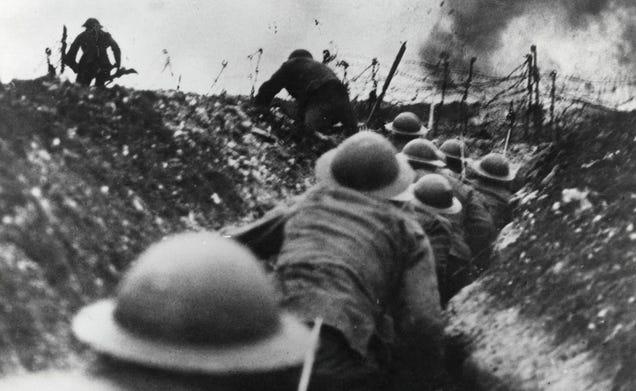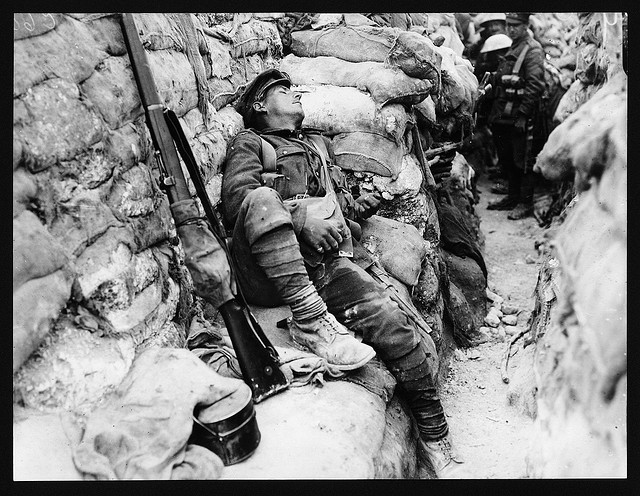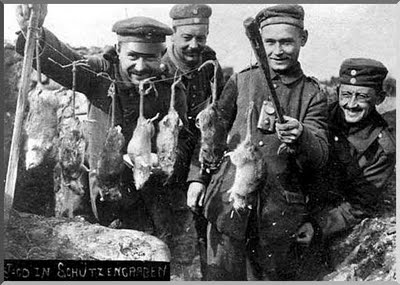by Will Pearson
Popular memory concerning the life of a Great War soldier is all about mud, rats, lice, machine-guns and being shot at dawn if you disobeyed.
However, the facts of a typical Tommy's life paint a rather different picture. For example: did you know that a typical infantry soldier was only in the front line trenches for about one quarter of his total time overseas and involved in action for a few days in the whole war?
Popular memory concerning the life of a Great War soldier is all about mud, rats, lice, machine-guns and being shot at dawn if you disobeyed.
However, the facts of a typical Tommy's life paint a rather different picture. For example: did you know that a typical infantry soldier was only in the front line trenches for about one quarter of his total time overseas and involved in action for a few days in the whole war?
Although most of us think primarily of the Great War
in terms of life and death in the trenches, only a relatively small proportion
of the army actually served there. The trenches were the front lines, the most
dangerous places. But behind them was a mass of supply lines, training
establishments, stores, workshops, headquarters and all the other elements of
the contemporary system of war, in which the majority of troops were employed.
The trenches were the domain of the infantry, with the supporting arms of the
mortars and machine-guns, the engineers and the forward positions of the
artillery observers.
The idea of digging into the ground to give some protection from
powerful enemy artillery and small arms fire was not a new idea or unique to
the Great War. It had been widely practiced in the US Civil War, the
Russian-Japanese war and other fairly recent wars. Trench warfare can be said
to have begun in September 1914 and ended when the Allies made a breakthrough
attack in August 1918. Before and after those dates were wars of movement: in
between it was a war of entrenchment. The massive armies of 1914 initially
fought a war of movement, and any trenches dug were only for temporary cover.
But from the Battle of the Aisne onwards, both sides dug in to take cover and
hold their ground. The successive movements to outflank the enemy trenches came
to an end by November 1914. By then there was a continuous line of trenches
covering some 400 miles from Switzerland to the North Sea.
Trench conditions varied widely between different theatres of war with the time of year and weather. Trench life was however always one of considerable squalor, with so many men living in a very constrained space. Scraps of discarded food, empty tins and other waste, the nearby presence of the latrine, the general dirt of living half underground and being unable to wash or change for days or weeks at a time created conditions of severe health risk (and that is not counting the military risks). Vermin, including rats and lice, were numerous; disease was spread both by them, and by the maggots and flies that thrived on the nearby remains of decomposing human and animal corpses. Troops in the trenches were also subjected to the weather: the winter of 1916-1917 in France and Flanders was the coldest in living memory; the trenches flooded in the wet, sometimes to waist height, whenever it rained. Men suffered from exposure, frostbite, trench foot and many diseases brought on or made worse by living in such a way. Overall, the life of a Tommy was not a happy one, but there are many misconceptions about the extent to which the soldiers were exposed to this harsh life.
Trench conditions varied widely between different theatres of war with the time of year and weather. Trench life was however always one of considerable squalor, with so many men living in a very constrained space. Scraps of discarded food, empty tins and other waste, the nearby presence of the latrine, the general dirt of living half underground and being unable to wash or change for days or weeks at a time created conditions of severe health risk (and that is not counting the military risks). Vermin, including rats and lice, were numerous; disease was spread both by them, and by the maggots and flies that thrived on the nearby remains of decomposing human and animal corpses. Troops in the trenches were also subjected to the weather: the winter of 1916-1917 in France and Flanders was the coldest in living memory; the trenches flooded in the wet, sometimes to waist height, whenever it rained. Men suffered from exposure, frostbite, trench foot and many diseases brought on or made worse by living in such a way. Overall, the life of a Tommy was not a happy one, but there are many misconceptions about the extent to which the soldiers were exposed to this harsh life.



Comments
Post a Comment
Comments with names are more likely to be published.